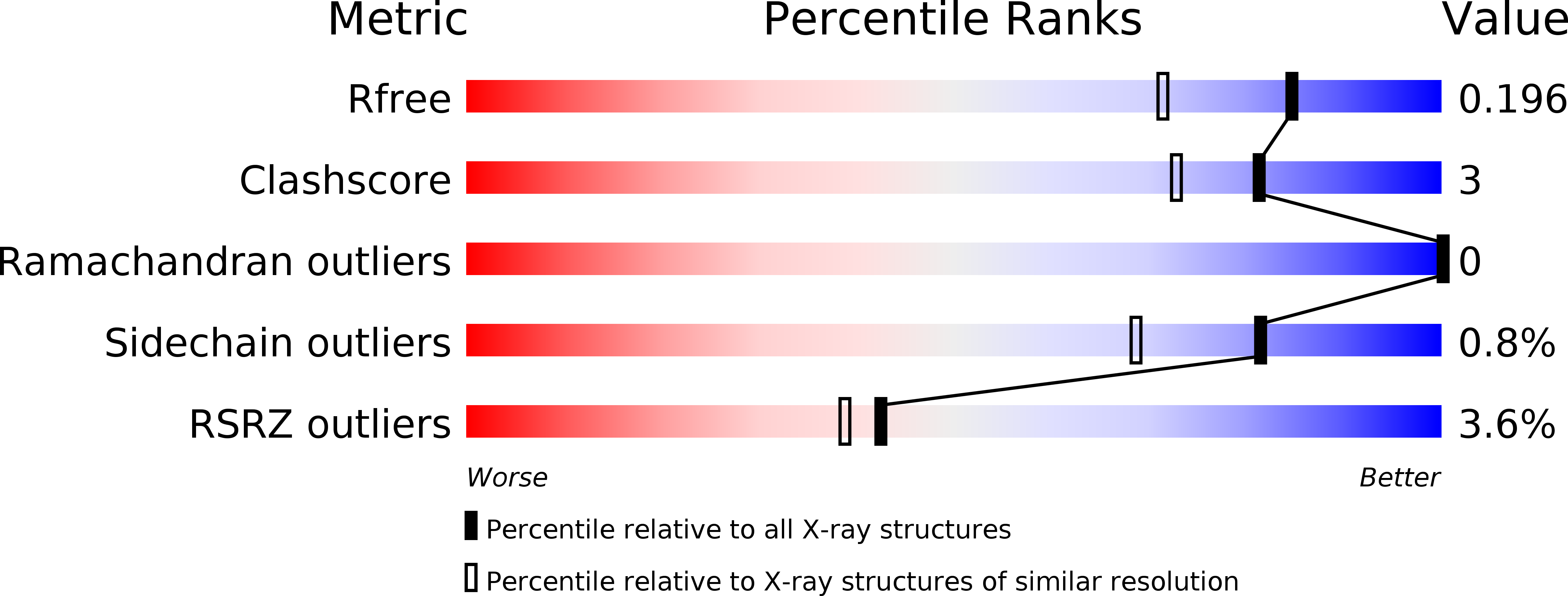
Deposition Date
2019-12-02
Release Date
2019-12-18
Last Version Date
2024-01-24
Entry Detail
PDB ID:
6TLD
Keywords:
Title:
Crystal structure of Schistosoma mansoni HDAC8 complexed with a triazole hydroxamate inhibitor 2
Biological Source:
Source Organism:
Schistosoma mansoni (Taxon ID: 6183)
Host Organism:
Method Details:
Experimental Method:
Resolution:
1.61 Å
R-Value Free:
0.19
R-Value Work:
0.16
R-Value Observed:
0.16
Space Group:
P 1


